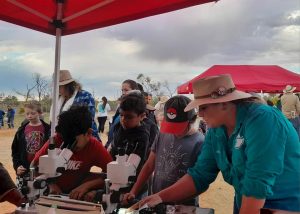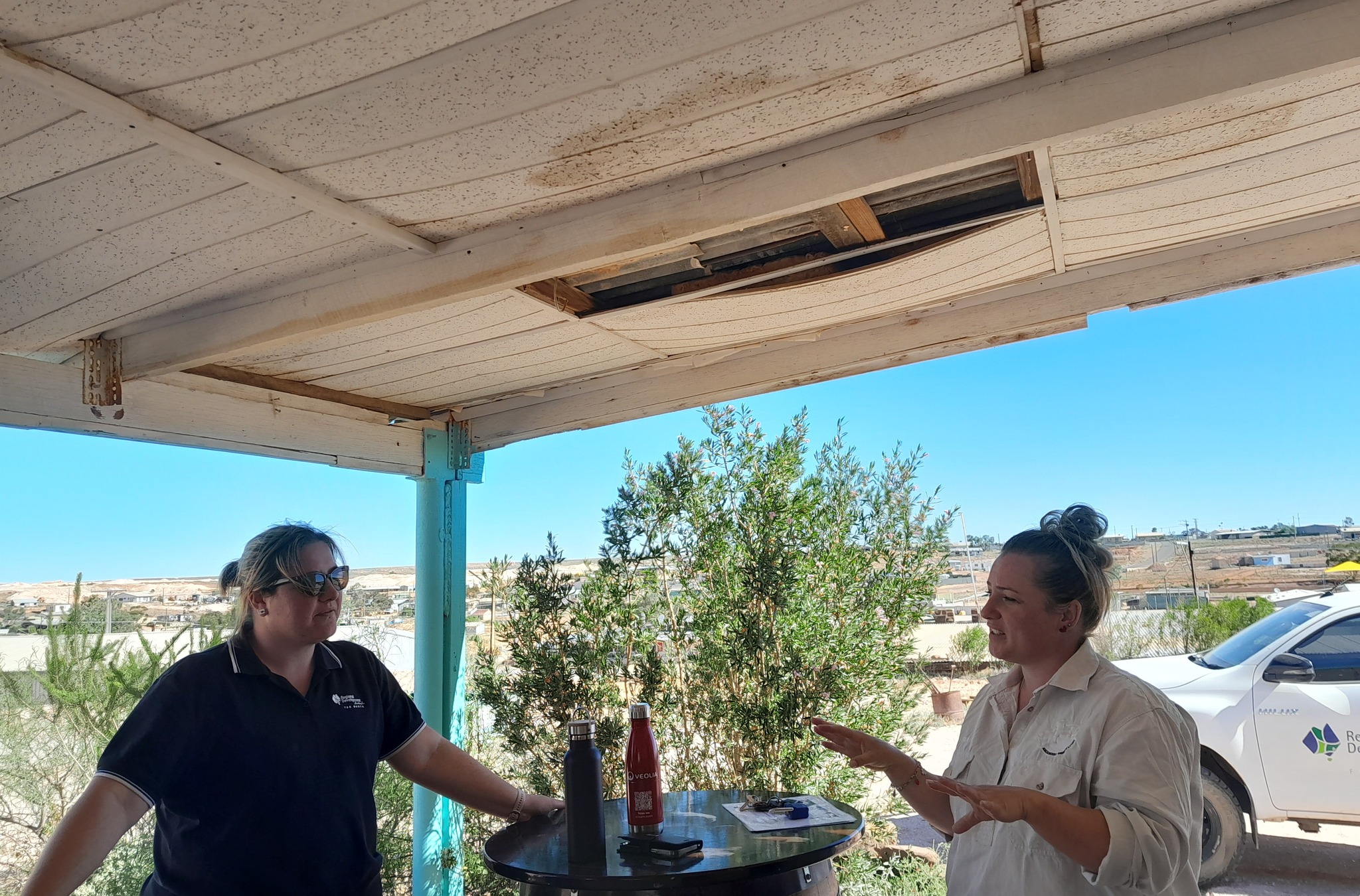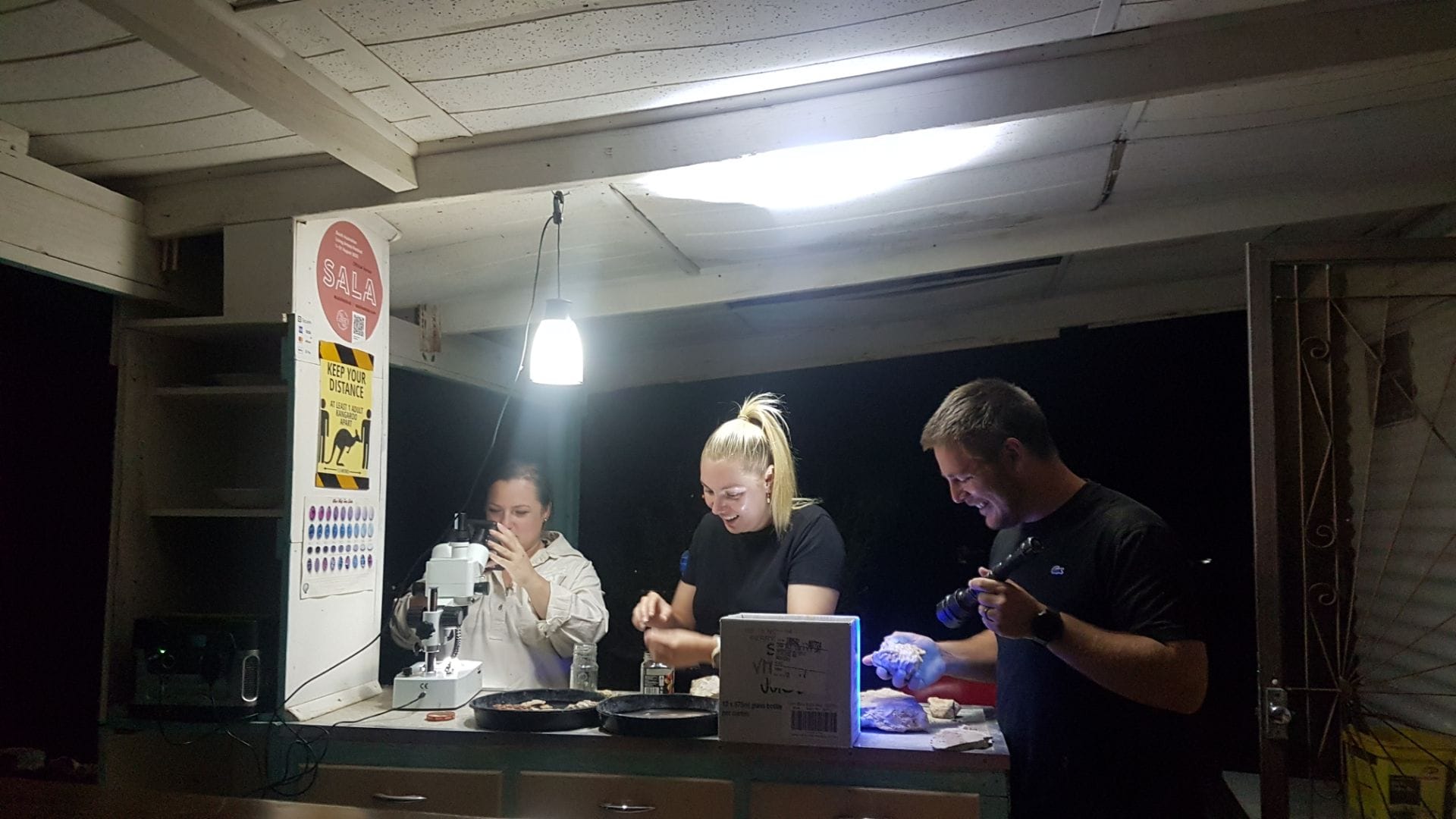



To celebrate the International Day of Women and Girls in Science, we introduce Leila Day.
Leila is a citizen scientist, opal miner and artist who studies and learns about opal and opalised fossils, plus the earth sciences that come with it – palaeontology, geology, and gemology. In 2020 and 2022, Leila‘s work at the Andamooka Observatory was recognised by the London-based international aerospace company Ultra Group for her STEM collaborations with the Woomera Observatory, the Southern Cross Outback Observatories Project (SCOOP), Mareekh Dynamics, BHP Olympic Dam, Mine Tech Engineering, Inspiring SA, and other citizen scientists to search for new extremophiles in the region: tardigrades, cyanobacteria and stromatolites.
In early April 2023, the Andamooka Observatory, Mareekh Dynamics, the Southern Cross Outback Observatories Project (SCOOP), and Woomera Observatory conducted an expedition to study fossilised colonies of bacteria and stromatolites on a site visit to Stuarts Creek and Lake Torrens. The Andamooka Observatory is currently searching for microfossils and bacteria in opal, their connection to potential life on Mars, and their ancient fossils that may be found in Martian opal and meteorites in Antarctica.
Over 16 years living in South Australia’s Far North, Leila has collaborated with local and visiting scientists and artists, curated local arts and STEM-themed events and focused on building a sustainable future in tourism, arts and culture for the region.
Leila represents her region on boards such as the Outback Communities Authority, Flinders Ranges and Outback Tourism Marketing Committee, Kingoonya Landscape Group, Andamooka Opal Fields Tourism Association Inc (AOFTA), Roxby Downs Art Forum, Roxby Downs District Rotary Club and outside of running her own art business, is employed at the Andamooka Post Office as a Counter Operator and at the Andamooka Observatory as a Tour Guide.
Leila is a member of the Space Industry Association of Australia, the Astronomical Society of South Australia (ASSA), the South Australian Museum, and the Mars Society of Australia (MSA).


